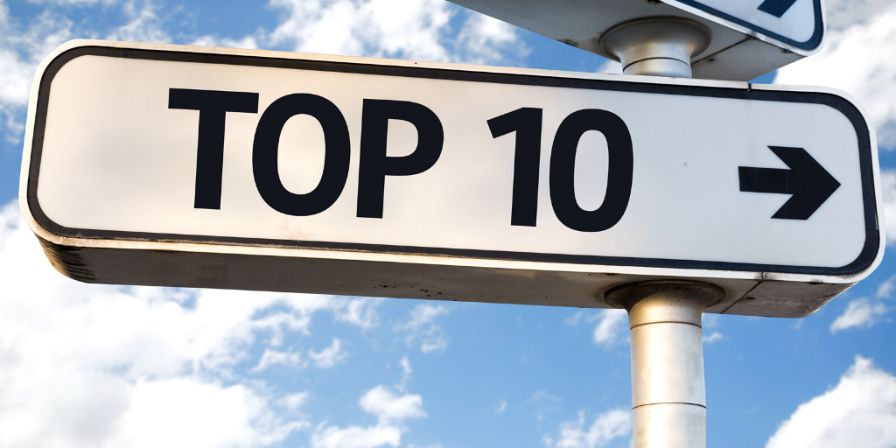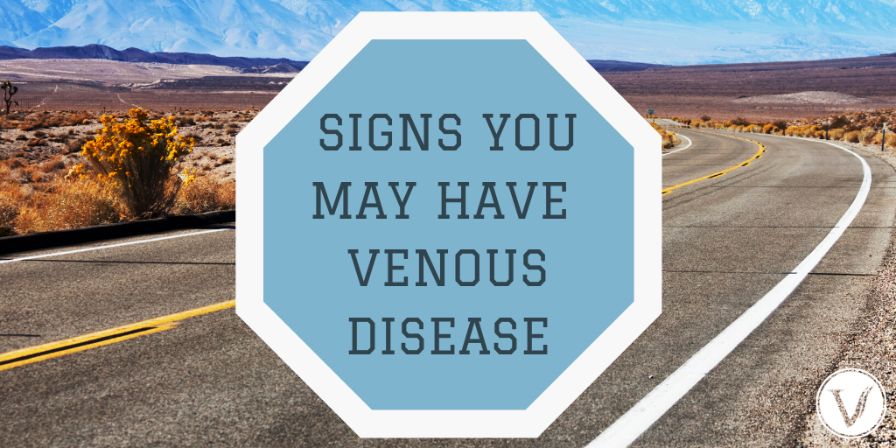One in three Americans over the age of 45 are affected by vein disease. Because veins have thinner walls than arteries, they are prone to damage. Those damaged vein walls impede circulation and cause blood to pool and flow retrograde (or backward) when muscles relax, which creates pressure in the lower legs which then causes more damage to the veins. This further damage can include twisting, swelling, blood clots, improperly functioning valves, and poor circulation overall.
Table of Contents
ToggleHow vein disease can impact your life

Initially, vein disease may not be noticeable without a professional medical diagnosis. As it progresses though, it may cause emotional discomfort or embarrassment because of how it looks. Vein disease can also impede activity, range of motion, or even the ability to perform daily tasks. At the worst, vein disease may develop into life-threatening blood clots that can form a pulmonary embolism, which is a blood clot that has traveled to the lungs.
One of the most commonly understood signs of venous disease is the appearance of varicose veins. Varicose veins often appear in the legs, but they can occur in other places. Even hemorrhoids are actually a type of varicose vein and therefore indicate venous disease. So let’s take a look at some of the most common signs and symptoms of venous disease.
Top 10 signs and symptoms of venous disease

1. Skin that feels tight or itchy
Tight or itchy skin may be simply dry skin or it may be a sign of venous disease. Especially around the ankles or calves, be aware of itchy skin that has no accompanying rash or known external reason to be itchy.
2. Enlarged veins that are visible beneath the surface of the skin
Veins are already more visible than arteries because veins are quite close to the surface of the skin while arteries are buried more in the tissue of your body. Arteries also carry oxygenated blood so they generally blend in more with the tone of your skin pigment. Because veins tend to stand out more, especially on those with less of the pigment melanin, we get used to being able to see them. But when they appear more enlarged or visible than normal and do not return to normal, then it may be a sign of venous disease. A normal cause of increased vein visibility or enlarged veins might be during an intense workout or while lifting heavier things. But if your enlarged veins are merely caused by this, they will return to normal after a period of rest and recovery.
3. Edema or swelling of the lower legs or feet or hands
Swollen hands or swollen legs can sometimes just make you feel achy and stiff without being excessively visible, but you shouldn’t have to accept this as your new normal. Swelling and accumulation of fluid from poor circulation as a result of venous disease is called edema. This form of venous disease is more severe when malfunctioning valves in veins start to allow blood to pool, increasing pressure in veins. When fluid then seeps out into your surrounding soft tissues and accumulates, the edema can become very uncomfortable.
4. Legs that feel achy, tired, heavy, warm or even painful
Generally, aches, tiredness, heaviness, warmth, and pain from the venous disease will be relieved with rest. Since the venous insufficiency of the vein disease is taxed by physical activity, this is why rest brings relief. Although, moderate and monitored physical activity is a part of the journey to health when facing the venous disease.
5. Discolored pigmentation and unusually darkened melanin of the skin
Chronic venous insufficiency (CVI) may result in pigment skin changes especially around the lower leg and ankle. This happens because in diseased veins the high venous pressure actually forces red blood cells out of the veins and into the surrounding soft tissue. The red blood cells then rupture and release hemoglobin which contains iron. The iron pigment stains the skin and gives it a rust-brown color. Unfortunately, once this happens the pigment changes become permanent like a tattoo.
6. Thickened or hardened skin or even ulcers
When left untreated, venous insufficiency can lead to a progression of complications including ongoing discomfort and pain, hemorrhage (bleeding or abnormal flow of blood), superficial thrombophlebitis (blood clot), and progressive skin changes that can eventually lead to ulceration.
7. Open sores
One of the worst symptoms of venous disease is an ulcer in the skin. Ulcers are usually located in the lower leg and ankle. They are caused by high pressure in the diseased veins. This high pressure is transmitted to the skin surface which causes the skin to break down leading to an open sore or ulcer. Ulcers are extremely painful and can become secondarily infected by bacteria that live on the skin.
8. Blood clots
When blood slows down it thickens and can from a clot. Venous disease causes high pressure in the veins which slows the blood down which and can result in a blood clot. Once a clot forms in the vein your body creates inflammation around the vein to try and heal it. The vein becomes hard, red and painful. This is what happens in phlebitis. Improper circulation due to venous disease can often lead to blood clots or phlebitis.
9. Restless leg syndrome
Restless leg syndrome is the irresistible urge to move the legs to find relief for legs that feel uncomfortable. Research shows that treating venous disease improves the symptoms of restless leg syndrome, suggesting an association between the two.
10. Leg cramps
Leg cramps, or a “charley horse”, can startle you out of deep sleep. But those muscle spasms and painful cramps may indeed be a symptom of venous disease.
Sources:
Varicose Veins. National Heart, Lung, and Blood Institute.
Chronic venous insufficiency: What to know. Medical News Today.
Chronic Venous Insufficiency. John Hopkins Medicine.
Venous Disease. John Hopkins Medicine.
What to know about poor circulation. Medical News Today.
Discoloration and edema on anterior shin. The National Center for Biotechnology Information.
What’s to know about fat necrosis? Medical News Today.
Sequelae of Untreated Venous Insufficiency. The National Center for Biotechnology Information.
Venous Insufficiency Ulcers. Wound Source.
Let us help!

The best way to know if the symptoms you are experiencing are related to the venous disease is to get professional medical help. If you are in the greater Chattanooga area, we would be honored to offer you a free consultation. You can schedule yours here. We hope to see you soon!

